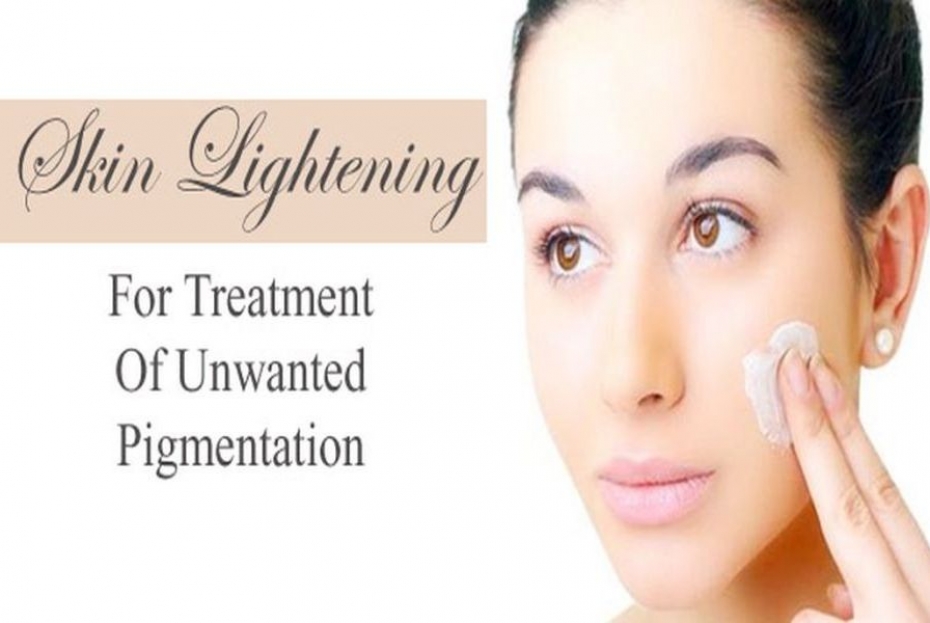
Pigmentation
Pigmentary changes are very common and it increase with age. It is influenced by trauma, acne (post acne marks), chronic sun damage, unhealthy lifestyle, genetic and hormonal imbalance. With the advent of Lasers and IPL, the pigmentary damages accumulated over the years can be reversed safely, to give you a clearer and brighter skin!
Freckles, melasma, age spots,Post inflammatory hyperpigmentation (PIH) and many other pigmentary changes are part of the aging process. As aging proceeds, the normal cell turn over mechanism that produces healthy cells slows down. Eventually there will be more pigment cells that surfaces rather than the healthy cells. Sun exposure, hormonal, genetic influences and certain drugs can augment this process.
There are more than one pathway in the skin that triggers off melanocyte formation (melanocytes are cells that produce melanin).
Sun radiation
The most common triggering factor is the ultraviolet A (UVA) and ultraviolet B (UVB) radiation from the sun. The UV radiation triggers off a chain reaction within the epidermis and dermis that stimulates melanocyte formation. The UV radiation from the sun activates the tyrosinase enzyme, which is one of the major biological pathway for activation of melanocyte. Applying sunblock will only help to minimize the harmful effects of sun but it does not confer full protection.
Aging
Another factor is aging process. For no known reasons melanocyte production increases with age. One theory postulates that the free radical reaction that DNA suffers in aging skin triggers off melanocyte formation.
Hormone
Hormone changes such as after pregnancy, oral contraceptive pills, etc stimulates melanocyte formation by activating the tyrosinase enzyme.
Trauma
Post inflammatory hyperpigmentation, such as after acne, trauma, burns etc stimulates melanocyte production.
There are few types of pigmentation. The choice of treatment depends on the type and severity of the pigmentation.
Melasma
Most common pigmentary condition, especially among Asians. Seen in middle aged individuals and also after pregnancy or oral contraceptive pills. Presents as a large irregularly shaped patch that slowly gets larger and darker over time. Responds well to Fractional CO2 laser, IPL and 800 nm Diode laser treatments.
Solar lentigo
Common among adults. Appears as a small well-defined patch on the skin. Most often the lesion is epidermal (superficial) and responds very well to Spot 532 nm wavelength laser treatment.
Freckles
Common among teenagers and middle aged individuals. Appears as multiple small-discoloured spots most often over the cheek and around the eye area. Responds very well to Spot 532 nm wavelength laser treatment.
UV Dyschromia
Most common pigmentary conditionamong Caucasians (especially Australians)Seen in middle aged individuals who have subjected themselves to excessive sun exposurePresents as a large irregularly shaped dark patches, overlapped by sharply demarcated frecklesthat slowly get larger and darker over time. Responds well to Fractional CO2 laser, IPL and Spot 532 nm laser treatments.
Post inflammatory hyperpigmentation (PIH)
Common after an inflammatory process such as acne, chemical or laser burns, drug blisters (allergic reaction), trauma, etc. Appears as dark, well-defined patches. Responds well to Fractional CO2 laser, IPL and 800 nm Diode laser treatments.
Nevus of Ota
Well-defined, dark and irregular shaped pigmentation that resembles freckles. Treatment for a nevus is different from freckles. Unlike freckles, nevus has marginal improvement following treatments. Responds well to Fractional CO2 laser, IPL and 1064 nm laser treatments.
Pigmentation reversal procedures
Based on the skin type, type of pigmentation and its severity, the physician may recommend either one or combine any of the following treatment modalities. It is important for patients to realize that pigmentation cannot be cured permanently. There are multiple factors - from lifestyle, hormones, genetics to environmental stress that influences pigmentary changes and all these deters pigmentation from being permanently cured. In addition to medical treatments, a healthy lifestyle and a positive mindset is equally crucial.
Pigmentation reversal - Fractional CO2 laser
Fractional CO2 laser is the latest in skincare technology and helps to reduce pigmentation especially melasma, uneven skin discoloration and lentiges. Fractional CO2 laser creates numerous microscopic laser punctures, which help promote microcirculation and new cell genesis. Regular treatments will help to replace the pigment cells with newer healthier cells. The skin is also smoothened in the process.
Immediately after the treatment the skin will appear red and in rare cases, minimally swollen. There may be numerous microscopic dots on the treated area, which will develop into fine scabs within a day or two. The scabs will disappear within 3 - 4 days; after which the skin is smoother and clearer. The entire recovery process takes about 3 - 5 days. During this time, patients are advised to apply more moisturizer and sun block to soothe the skin and stay away from excessive sun exposure. An individual may require 4 – 8 treatments done once in 2 - 3 weeks. The actual number of treatments will depend on the severity of the skin condition, skin type and lifestyle.
Pigmentation reversal - Carbon Peel
It is a new technique of using medical grade Lasers for skin rejuvenation. This technique uses the Q switch Nd YAG laser at 1064 nm. A layer of carbon is first applied onto the skin. The carbon acts like a ‘magnet’ and adheres to the dead cells, both on the skin surface and the walls of the open pores. The laser is fired onto the carbon. The carbon absorbs most of the laser energy and is fragmented along with the dead cells, resulting in a perfect skin exfoliation. Simultaneously, the laser energy is distributed as heat into the dermis without affecting the outer layers of the skin (the epidermis). The heat energy weakens the pigment cells, stimulates new cell growth and restores the skin integrity.
An individual may require 4 – 8 treatments done once in 2 - 3 weeks. The actual number of treatments will depend on the severity of the skin condition, skin type and lifestyle.
Pigmentation reversal - Light Therapy
Intense pulsed light (IPL) is useful to treat melasma, freckles, lentigo and uneven skin discoloration. IPL treatment distributes light energy as heat beneath the skin's layers without affecting the outer layers of the skin (the epidermis). A layer of cold gel is applied onto the skin. The gel keeps the epidermis cool while the heat is distributed into the dermis. The IPL energy, based on the selected treatment parameters, is absorbed by the pigment cells and the melanocytes become fragmented. Immediately after the treatment, the skin may appear red. Very rarely, there may be scab formation, which disappears within 3 - 4 days. During this time, patients are advised to apply more moisturizer and sun block to soothe the skin and stay away from excessive sun exposure.
An individual may require 4 – 8 treatments done once in 2 - 4 weeks. The actual number of treatments will depend on the severity of the skin condition, skin type and lifestyle.
Pigmentation reversal - NdYAG (532nm) & NdYAG (1064nm)
Q Switch Nd YAG laser with wavelengths of 532 and 1064 nm is a very good laser in treating pigmentation. The docotr after assessing the patent’s skin type and type of pigmentation will prescribe the suitable laser and its settings.
Pigmentation reversal - Pharmaceuticals
Hydroquinone (HQ)
Hydroquinone (HQ) is a bleaching cream that acts by inhibiting tyrosinase activity. It is available as creams or lotions in concentration of 4%. HQ needs to be used for at least 2 – 6 months in order to notice skin lightening. However, if there is no obvious lightening effect after 2 months, then the medication should be discontinued. Though it is effective and cheap, there are side effects with over use of HQ such as skin irritation, contact dermatitis, confetti like depigmentation, nail discoloration and ochronosis. HQ is not advised during pregnancy and lactation. It should be used under strict medical supervision. Pharmaceutical regulations in most country do not allow Hydroquinone based cosmeceutical to be sold over the counter.
Vitamin C
Vitamin C, the biologically active form- ascorbic acid is a water-soluble vitamin. Vitamin C has received much publicity from various sectors about its skin lightening properties, especially the recent injectable form. However, as of date there has NOT been any approval from the local health authorities or published clinical papers about the much-hyped uses of Vitamin C injections. Vitamin C is also a very unstable vitamin thus making difficult to be delivered onto the skin. The efficiency of topical preparations (creams & lotions) of Vitamin C needs further clinical studies. The biggest challenge in using Vitamin C is to ensure its stability and delivery into the skin. Vitamin C naturally is a potent antioxidant, which has numerous dermatological benefits such as:
L - Ascorbic acid inhibits tyrosinase and decreases melanin oxidation which has skin lightening effects
Provides photo protection and prevents skin damages due to UV rays
Co factor for prolyl hydroxylase which assist in wound healing and collagen synthesis
L - Ascorbic acid improves epidermal barrier function
Other skin lightening agents
Azaelic Acid is a saturated straight-chain 9-C dicarboxylic acid found in whole grains of wheat, rye, barley. Though it is commonly used in the treatment of acne, it is also effective in treatment of hyperpigmentation such as melasma.
Retinoic acid is a vitamin A analog, which is commonly used to treat acne. Through its cell proliferation and exfoliation effects, it also helps to lighten pigmentation.
Arbutin, Kojic Acid and Licorice are hydroquinone glycoside extracted fromplant. It inhibits tyrosinase and has antioxidant property, which helps protect skin against UV and lightens the skin.
For more information, please visit our medical aesthetic centres.
We are a medical practice dedicated to delivering the highest level of care in the fields of aesthetics. Our caring and skilled staffs are ready to address your medical and cosmetic needs. Our aesthetic clinics are at Kajang and IOI CITY MALL, Putrajaya.
Our aesthetic clinic at Kajang is conveniently located to serve you if you are from Kajang, Bangi, Semenyih, Cheras, Sg Long and Cheras Mahkota areas. Our aesthetic centre at IOI CITY MALL, PUTRAJAYA is strategically located to serve customers from Putrajaya, Cyberjaya, Puchong and Serdang.
Our centre at IOI City Mall, Putrajaya is the only aesthetic centre at Putrajaya and Cyberjaya region that is a dedicated medical aesthetic centre.
Our services are meso-therapy, PRP, Laser, Botox injection, Filler injection, Chemical peel, Hair removal, Micro-needling, Body slimming, Laser facelift (Accu-lift or accusculpt lift) and many more. At our IOI CITY MALL, Putrajaya and Kajang aesthetic centres, you will sure to receive professional medical aesthetic treatment with proven result and at competitive price.

